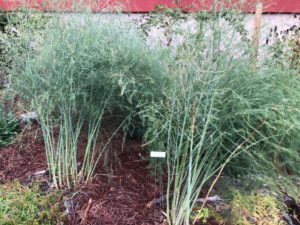Asparagus: the Incredible Edible Ornamental
go.ncsu.edu/readext?656876
en Español / em Português
El inglés es el idioma de control de esta página. En la medida en que haya algún conflicto entre la traducción al inglés y la traducción, el inglés prevalece.
Al hacer clic en el enlace de traducción se activa un servicio de traducción gratuito para convertir la página al español. Al igual que con cualquier traducción por Internet, la conversión no es sensible al contexto y puede que no traduzca el texto en su significado original. NC State Extension no garantiza la exactitud del texto traducido. Por favor, tenga en cuenta que algunas aplicaciones y/o servicios pueden no funcionar como se espera cuando se traducen.
Português
Inglês é o idioma de controle desta página. Na medida que haja algum conflito entre o texto original em Inglês e a tradução, o Inglês prevalece.
Ao clicar no link de tradução, um serviço gratuito de tradução será ativado para converter a página para o Português. Como em qualquer tradução pela internet, a conversão não é sensivel ao contexto e pode não ocorrer a tradução para o significado orginal. O serviço de Extensão da Carolina do Norte (NC State Extension) não garante a exatidão do texto traduzido. Por favor, observe que algumas funções ou serviços podem não funcionar como esperado após a tradução.
English
English is the controlling language of this page. To the extent there is any conflict between the English text and the translation, English controls.
Clicking on the translation link activates a free translation service to convert the page to Spanish. As with any Internet translation, the conversion is not context-sensitive and may not translate the text to its original meaning. NC State Extension does not guarantee the accuracy of the translated text. Please note that some applications and/or services may not function as expected when translated.
Collapse ▲
Image by Doris Ratchford CC BY-NC-ND
Not only is asparagus a nutritious, early spring vegetable, but it is also an herbaceous perennial: dying back to the ground each fall, and sprouting back from the crown each spring. Plantings can last 15 years or more, making it a great return on a small investment. Asparagus can be planted at the edge of a vegetable garden, but consider mixing it in amongst your ornamental landscape plantings.
Asparagus can fit nicely in the back of a perennial border. The stems or ‘spears’ emerge early in spring, adding a bold vertical element to your design. For more early spring color, consider the purple-speared cultivar ‘Purple Passion’. As the harvest season ends, the spears will open into lovely, light, airy fern-like foliage that can reach heights of 3-5 feet. In the fall, asparagus turns a nice golden yellow, fading to brown for added visual interest in winter.
Asparagus is relatively easy to grow, but there are a few things to know before you get started. First, it likes a pH of 6.0-7.0, which is higher than most native soils in North Carolina. Your soil test will tell you how much lime you need to have the right pH. It requires well-drained soil, thriving in sandy loams. You can improve your soil structure and drainage by incorporating organic matter. Select 1-2-year-old crowns of all-male varieties such as the ‘Jersey’ hybrids. Female plants produce seeds that can germinate and become a nuisance in the garden. For more information, see this NC State Extension Publication Home Garden Asparagus Production.


